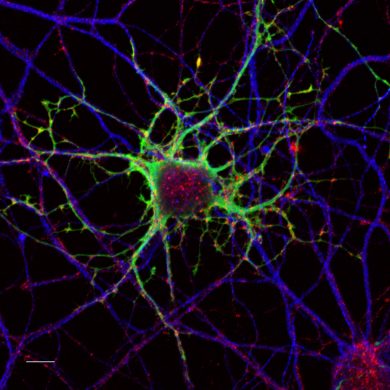BY PETER CHEW| UTS WRITER | SQ 2017-2018
[hr gap=”null”]
DNA, proteins, and other vital biomolecules make up some of the most complex and amazing systems that we know about – that includes you! The actions of such biomolecules is what allows life to be extremely dynamic, self-propagating systems. These systems, through an evolutionary scheme of genome editing, are also continuously optimized to perform specialized functions. For example, CRIPSR-Cas9 was a gene-editing mechanism found in Streptococcus pyogenes and is part of the bacterium’s defense against viral agents; CRISPR has since been co-opted by scientists to modify DNA with unparalleled freedom and accuracy. It is no wonder that the field of synthetic biology has emerged as a result of strong interest in reverse engineering and synthesizing new biological tools.
Synthetic biology is a relatively new field that is aimed at the creation of novel systems using the same type of biomolecules that makes up life as we know it. There are two main approaches to this goal; the first involves repurposing structures that are found in nature to make biosynthetic devices, and the second involves synthesizing novel molecules that fit desired specifications, extending the number of “building blocks” that can be used for building devices. Specially modified proteins such as synthetic variants of T7 RNA Polymerase, can be used to construct a biological logic gate that toggles between two metabolic pathways. This can be used to streamline biological responses to different conditions. Possible applications of the fruits of synthetic biology could be in the creation of artificial life, such as assisting in the creation of bacteria that break down oil from oil rig spills or that assist in the creation of biofuels. Other than the production of various biomaterials, synthetic biology may also yield advances in data storage technology by capitalizing on, for example, DNA’s impressive data density. It is reported that a theoretical 215 petabytes (215 million gigabytes) may be stored in as little as 1 gram of DNA.
Through the use of these synthetic techniques, biologists hope to develop tools and methods that will allow an “engineering” approach to problems in biology and medicine. By abstracting away from the inherent complexity of biological systems – the tools that future bioengineers will use will allow for more time and energy spent designing higher-order systems. A similar use of abstraction may be found in computing. It is not necessary for a user to understand the workings of a program, nor is it necessary for the programmer that wrote that program to understand how modern CPU’s implement the logic required to run the program. This fact was not lost on scientists, and the investigating the feasibility of using biological circuits for computation is still an active area of research.
Biomolecular computing, in lieu of traditional solid-state electronics, involves implementations of the same logic in DNA/RNA form. There have been attempts to apply biomolecules such as DNA to the discipline of computing. An area of active research in computer science are in finding fast solutions to NP-complete problems, which require enormous amounts of conventional computing power as the problem scales up. In 1994, an attempt was made to solve one such problem by encoding it within DNA and extracting the solution using molecular techniques. This method took advantage of molecular reaction characteristics in order to achieve massive parallel computation (roughly “a thousand-fold faster than the instruction cycle of a supercomputer”[1]). DNA computation for tackling NP-complete problems were also much more energy-efficient than a conventional supercomputer. However, the experiment also highlighted significant disadvantages to DNA computation, including DNA’s tendency to imperfectly hybridize (bind with incorrect nucleotides) introducing error into the calculations. To counter this, error-correcting algorithms had to be employed in order to obtain an accurate result. Some types of calculation that are easy to do on a conventional computer, such as the multiplication of large numbers, are also unwieldy to implement using molecular methods, to say the least.
Computing on “wetware” has only recently begun, but it has already shown great promise in applications that benefit from massive parallelization on a miniature scale. Certain properties of biomolecules will make computing on such a substrate fundamentally different from that of conventional computing; an example of such a complication is the irreversible nature of some biomolecular reactions necessitating a “reset” every time an algorithm is run. However, if this nascent technology is developed and used alongside conventional computing, we may extend the limits of computing in both the types of problems computable, and data storage density available to us.
